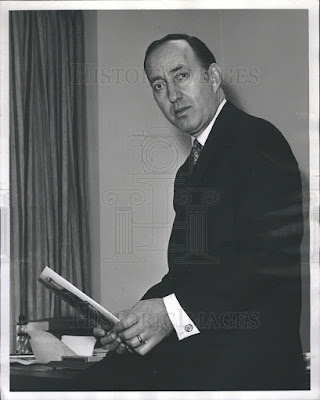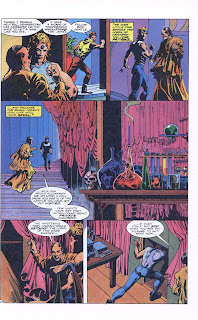April 1977
Issue One
April, 1977, and on the radio, Glen Campbell's Southern Nights is playing. And a new magazine, unlike anything previously seen in American comic book publishing, is on the news stands.
As related at the Heavy Metal magazine fan page, Matty Simmons and Leonard Mogel, the co-owners of the magazine publishing firm 21st Century Communications, were intrigued by the French comic magazine Metal Hurlant. On a visit to France in September 1976, Mogel met with the 'Humanoids Association' - the coalition of artists and writers who published Metal Hurlant - and secured an agreement to publish a U.S. version of the magazine.
It's not clear if Mogel was aware that the Humanoids Association previously had approached Marvel Comics about reprinting Metal Hurlant in the U.S. According to a 2000 interview with former Marvel president Jim Shooter, posted to the cbr.com website,
.........before the publication of Heavy Metal, Metal Hurlant came to Marvel seeking an American publisher. And after they did their presentation, we had a talk and Stan [Lee] thought that the stuff was too violent, too sexy and that good ol' sanitized Marvel couldn't do that. We thought he was crazy. But he was afraid that Marvel would get bad headlines, too violent, all that.
So it turned out that the people who published National Lampoon ended up with the American version of Metal Hurlant, which was Heavy Metal. And was phenomenally successful. Which made us grumpy.
[ There is limited information on Leonard Mogel available online; his birthdate is listed as October 23, 1922, and he evidently is alive and well as of 2017. He is listed as the author of a large number of books on magazine and book publishing at amazon.com. I found a black-and-white photograph of Mogel taken in 1968, when he was the publisher of Weight Watchers (!) magazine ]
Leonard Mogel, 1968
The inaugural issue of Heavy Metal features a striking cover illustration by Jean-Michel Nicollet and a back cover by Philippe Druillet. It's printed on 'slick' paper and features comics and illustrations in color, with quality separations and high resolution - things never before seen in the world of American comic books.
And, of course, the inaugural issue has plenty of tits, and ass, and frank nudity.......... 'European' stuff, rarely seen in American comic books, including the black-and-white Warren magazines.
Stoners are intrigued.
I was only 16 when the inaugural issue of Heavy Metal hit the stands. I remember seeing it, but buying a copy was out of the question; I preferred to save my meagre supply of dollars for DAW books and other sci-fi paperbacks. It wasn't until November, 1978, when I had my first job and some reasonably plentiful spending money, that I bought my first Heavy Metal.
(Sadly, used copies of issue one in good condition fetch exorbitant prices. Maybe the current publishers of the magazine will re-release the inaugural issue as a special publication; otherwise, getting hold of a copy is best done by searching for the .cbr file on the internet)
'Space Punks' is posted below.
(Sadly, used copies of issue one in good condition fetch exorbitant prices. Maybe the current publishers of the magazine will re-release the inaugural issue as a special publication; otherwise, getting hold of a copy is best done by searching for the .cbr file on the internet)
Needless to say, the content of those early issues holds up very well 40 years later. The inaugural issue had some really great stuff: an installment of 'Conquering Armies' by Dionnet and Gal; a dialogue-free but memorable 'Arzach' tale from Moebius; and 'Selenia' by Macedo.
Also in the first issue was the offbeat story 'Space Punks', by Jean-Claude Mézières, the illustrator of the immensely popular Franco-Belgian comic (bande dessinee) 'Valerian'.
'Space Punks' is posted below.




















































































